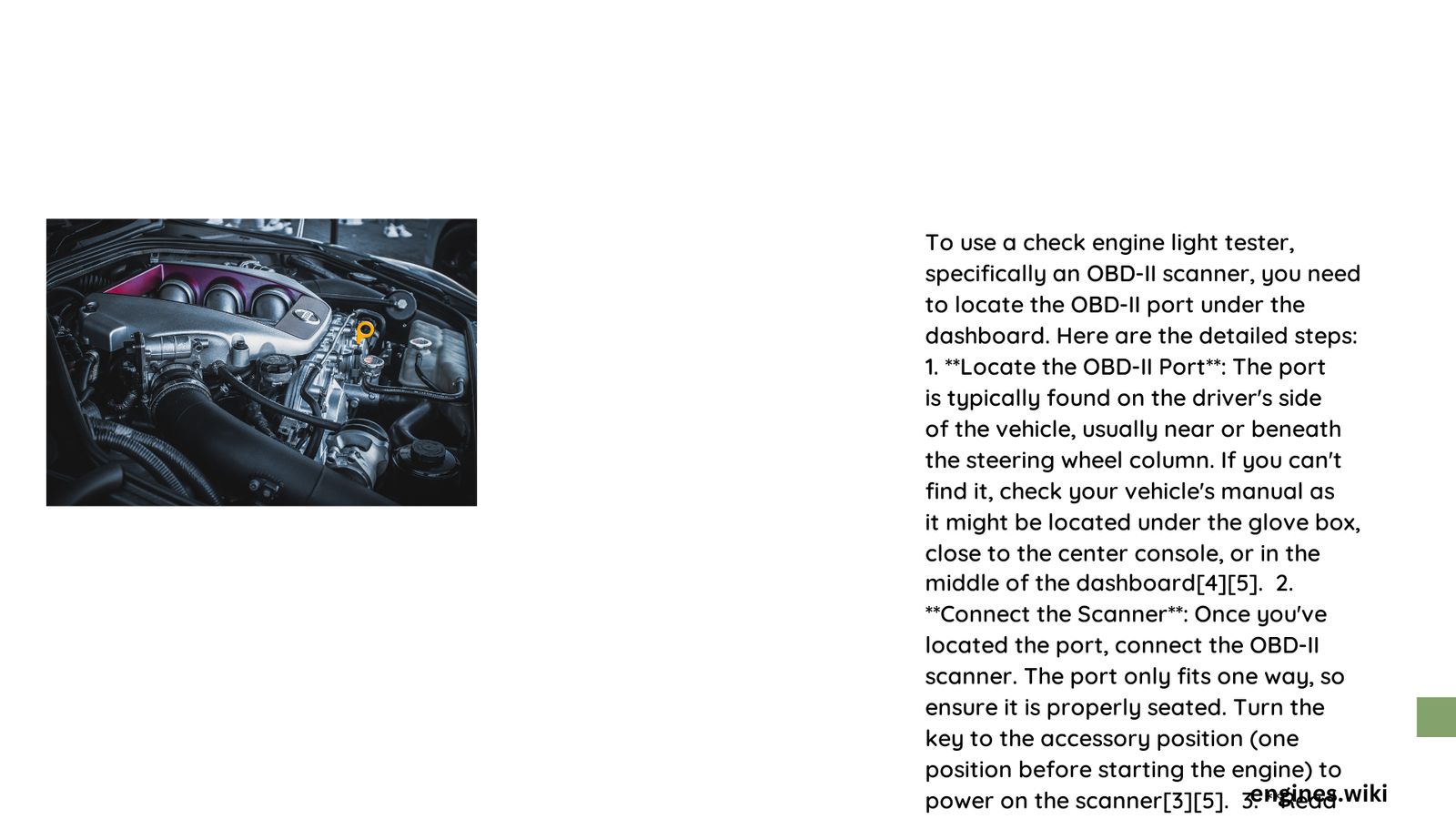When your vehicle’s check engine light illuminates, finding the right diagnostic port becomes crucial for understanding potential mechanical issues. Modern vehicles are equipped with an On-Board Diagnostics II (OBD-II) port, a standardized 16-pin connector that allows mechanics and car owners to interface with the vehicle’s computer system and retrieve critical error codes. Locating this port efficiently can save time, reduce diagnostic costs, and provide immediate insights into your vehicle’s health.
What Makes OBD-II Port Location Critical?
The OBD-II port serves as a diagnostic gateway, enabling comprehensive vehicle system analysis. Its strategic placement allows quick and easy access for troubleshooting various automotive problems. Understanding its precise location can help vehicle owners and technicians rapidly diagnose issues without extensive disassembly.
Where Can You Find the OBD-II Port?
Vehicle manufacturers typically place the OBD-II port in several consistent locations:
- Steering Column Areas
- Underneath the steering column
- Left or right side of steering wheel
-
Near dashboard periphery
-
Footwell Locations
- Driver’s side footwell
- Near dead pedal
- Transmission tunnel region
-
Passenger-side footwell
-
Console Regions
- Between transmission and center console
- Near cup holder
- Adjacent to entertainment systems
| Vehicle Type | Typical OBD-II Port Location | Accessibility |
|---|---|---|
| Sedan | Under steering column | High |
| SUV | Driver’s side footwell | Medium |
| Truck | Near transmission tunnel | Medium-High |
| Compact Car | Dashboard periphery | High |
How to Locate Your Specific Vehicle’s Port?

Recommended Search Strategies
- Consult vehicle owner’s manual
- Check manufacturer’s website
- Use online vehicle-specific diagnostic forums
- Perform physical inspection using flashlight
What Tools Help in Port Detection?
- Bright flashlight
- Smartphone with camera
- Magnifying glass
- Vehicle-specific diagnostic guide
Pro Tips for Successful Port Identification
- Port is typically within 2 feet of steering wheel
- Standardized 16-pin connector across vehicles
- May require slight repositioning or illumination
- Some vehicles have protective covers
Common Challenges in Port Location
- Poorly lit areas
- Obstructed access points
- Varying manufacturer designs
- Potential port camouflage
Best Practices for Check Engine Light Testing
- Ensure vehicle is stationary
- Ignition in “accessory” mode
- Gently insert diagnostic tool
- Follow manufacturer’s specific guidelines
- Use compatible diagnostic equipment
Potential Diagnostic Tool Options
- Bluetooth OBD-II adapters
- Handheld code readers
- Smartphone-connected scanners
- Professional-grade diagnostic computers
Safety and Precautionary Measures
- Disconnect battery if recommended
- Use surge-protected diagnostic tools
- Avoid forceful port insertion
- Follow manufacturer’s specific instructions
When to Seek Professional Help
- Complex error codes
- Repeated diagnostic challenges
- Specialized vehicle systems
- Limited technical expertise
Final Recommendation: While self-diagnosis is possible, professional automotive technicians can provide comprehensive insights when check engine light issues persist.
Reference:
– SlashGear – OBD-II Port Guide
– OBDeleven – Diagnostic Techniques
– AutoPi – Vehicle Diagnostics
